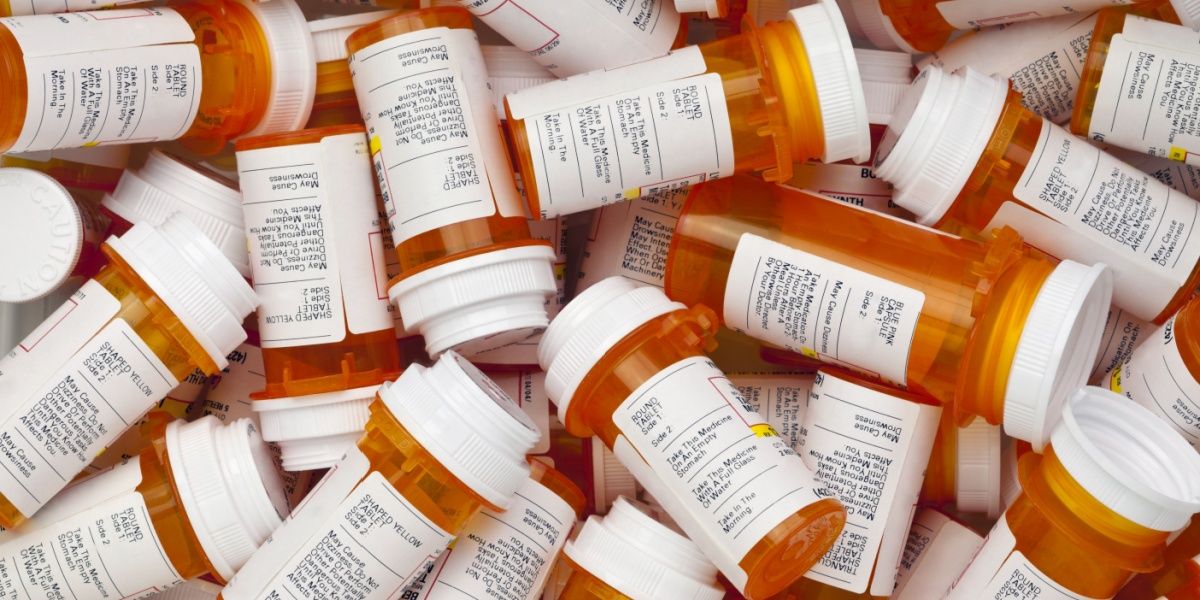Precedex (dexmedetomidine hydrochloride) is a sedative medication primarily used in intensive care units (ICUs) and procedural settings. Known for its unique ability to provide sedation without significant respiratory depression, it has become a vital tool for managing critically ill patients and those undergoing medical procedures.
- Precedex is a selective alpha-2 adrenergic agonist that offers sedation and pain relief while allowing patients to remain easily arousable.
- Although Precedex is not considered addictive, prolonged use can lead to physical dependence, with withdrawal symptoms like agitation and high blood pressure upon abrupt discontinuation.
- Precedex withdrawal is typically managed through tapering to prevent symptoms, making it essential for healthcare providers to monitor its use carefully.

What is Precedex (dexmedetomidine hydrochloride)?
Dexmedetomidine hydrochloride (Precedex) is a medication commonly used for sedation in intensive care units (ICUs) and during surgical or diagnostic procedures. It interacts with specific receptors in the brain, called α₂-adrenergic receptors (alpha 2 adrenergic receptors), to produce sedative effects.[1]
Precedex targets a brain region known as the locus coeruleus, which helps regulate arousal and stress by releasing norepinephrine (NE), a neurotransmitter that influences alertness and the "fight-or-flight" response specifically in this brain region, although NE also has other effects in different parts of the brain.
Precedex reduces NE release here, calming the sympathetic nervous system and producing sedation that resembles natural sleep.[2] Unlike many other sedatives, with Precedex, patients can be easily awakened, and it is therefore helpful in managing patients in ICUs or during procedures where quick responsiveness is needed.[3]
In addition to sedation, Precedex provides pain relief by acting on pain pathways in the spinal cord and brain, often reducing the need for, or the amount of, opioid painkillers.[1] However, it can cause side effects such as a slower heart rate (bradycardia) and low blood pressure (hypotension), which are usually manageable with proper monitoring.[3]
Precedex given as a bolus, in some cases, briefly raises blood pressure (known as transient hypertension) due to the vasoconstrictive effects on peripheral blood vessels.
Precedex has a unique structure—it’s an imidazole derivative and the pharmacologically active S-enantiomer of medetomidine, a drug used in veterinary medicine for similar purposes (sedation and analgesia) in small and large animals.[3] Its distinct mechanism of action sets it apart from other sedatives like propofol or midazolam.[1]
What is Precedex used for?
Precedex is clinically used for a variety of reasons, including both approved uses for specific indications and “off-label” use. Off-label refers to instances where a medication is prescribed or used for purposes that are not officially approved but are effective in those contexts.
Precedex is used for:[4][5][6][7][8][9]
- Sedation for mechanically ventilated patients in ICU (FDA-approved)
- Sedation for non-intubated patients undergoing procedures (FDA-approved)
- Pediatric sedation during non-invasive procedures (off-label): Used in pediatric patients (1 month to 18 years) for procedural sedation.
- Postoperative shivering management (off-label): It effectively prevents and manages shivering caused by general or spinal anesthesia.
- Adjunctive sedation in anesthesia (off-label): Administered during an operation to enhance sedation and reduce opioid requirements.
- Delirium and agitation management in ICU (off-label)
- Palliative care sedation (off-label): Precedex provides sedation and comfort in end-of-life care for patients with hyperactive delirium or agitation.
Precedex drug class
Precedex (generic name: dexmedetomidine hydrochloride) belongs to the alpha-2 adrenergic receptor agonist drug class. It is primarily used as a sedative in ICUs and procedural sedation.[5] Precedex works by selectively activating alpha-2 adrenergic receptors in the central nervous system, leading to sedative and analgesic effects while preserving respiratory function (breathing).[5]
Is Precedex a controlled substance?
Precedex is not classified as a controlled substance in the United States.[10] While it has potent sedative and analgesic properties, it does not have a significant risk of abuse or dependence when used as directed, which is why it is not regulated under the Controlled Substances Act. [10] However, it is still a prescription medication and must be used under the supervision of a licensed healthcare professional.
Is Precedex addictive?
Precedex is not considered addictive in the conventional sense. It does not strongly activate the brain's mesolimbic dopamine reward system, which is critical for developing addiction to substances such as opioids and benzodiazepines for example.[11] In clinical use, dexmedetomidine hydrochloride is administered intravenously under strict medical supervision, typically in critical care/ICU or during surgery, minimizing the opportunity for misuse.[12]
Animal studies have raised questions about its potential interaction with dopaminergic reward pathways. For instance, conditioned place preference, a marker for rewarding effects, has been observed in rodents treated with dexmedetomidine hydrochloride, suggesting it may have weak reinforcing properties.[13]
Furthermore, its action on alpha-2 adrenergic receptors may indirectly modulate dopamine levels in the nucleus accumbens, a region linked to addiction.[13] However, these effects are much weaker and context-dependent compared to highly addictive substances.
In humans, Precedex does not produce the cravings or compulsive use characteristic of addiction. However, prolonged use can result in physical dependence, with withdrawal symptoms such as rebound hypertension and agitation observed upon abrupt discontinuation.[14] These effects are typically managed through tapering and do not cause psychological dependence or addiction.
Therefore, Precedex is not classified as addictive. While it can lead to physical dependence with extended use, it lacks the euphoric effects and compulsive drug-seeking behavior associated with addiction.
What drugs are combined with Precedex?
Precedex is commonly used in critical care, ICU, and perioperative settings. It is many times combined with other drugs to enhance therapeutic effects, minimize side effects, or achieve specific clinical goals:[5]
- Opioids: Precedex is frequently used in combination with opioids (e.g., Fentanyl, Morphine, Remifentanil) for analgesia and sedation. The combination helps reduce opioid needs and its associated side effects like respiratory depression.
- Propofol: In surgeries or intensive care sedation, Precedex is combined with propofol to achieve deeper sedation while reducing the dose of each drug, potentially limiting adverse effects.
- Midazolam: Precedex is used in combination with midazolam for procedural sedation or as part of a multimodal approach in ICU sedation protocols. Anesthetics and sedation are almost always multi-modal.
- Neuromuscular blocking agents (e.g., Rocuronium, Vecuronium): During intubation or surgeries, Precedex may be used alongside neuromuscular blockers to maintain sedation and muscle relaxation without excessive respiratory depression.
- Ketamine: Precedex and ketamine are often combined for their complementary effects in pediatric sedation, chronic pain management, and surgeries requiring dissociative anesthesia.
- Local anesthetics (e.g., Lidocaine, Bupivacaine): Precedex enhances the analgesic effects of local anesthetics when used in regional anesthesia techniques like epidural or peripheral nerve blocks.
- Antiemetics (e.g., Ondansetron): In perioperative care, Precedex may be combined with antiemetics like ondansetron to counteract nausea and vomiting induced by anesthesia or other sedative agents.
- Non-steroidal anti-inflammatory drugs (e.g., Ketorolac): In multimodal pain management, Precedex is combined with NSAIDs to enhance postoperative analgesia without increasing opioid consumption.
Precedex side effects
Precedex can cause a range of side effects, from common issues like drowsiness and nausea to more serious complications such as pulmonary edema and pneumothorax. [5]
Common side effects of Precedex[5]
- Low blood pressure (hypotension)
- Transient high blood pressure (brief hypertension)
- Slow heart rate (bradycardia)
- Nausea
- Vomiting
- Dry mouth
- Drowsiness and fatigue
- High blood sugar (hyperglycemia)
Less common but potentially serious side effects[5]
- Fluid buildup between the lungs and chest cavity (pleural effusion)
- Partial or complete lung collapse (pneumothorax)
- Post-procedure bleeding
- Fluid in the lungs (pulmonary edema)
- Decreased urination (oliguria)
- Wheezing
- Swelling in the extremities (peripheral edema)
- Acid buildup in the body (acidosis)
- Extremely elevated body temperature (hyperthermia)
- Agitation
Precedex overdose
Reports of overdose in the traditional sense are rare and are mostly due to administration errors rather than intentional misuse leading to overdose. In such cases, the following signs and symptoms are present:
- Neurological effects: Deep sedation and unresponsiveness due to alpha-2 adrenergic receptor overstimulation.[15]
- Cardiovascular effects: Severe bradycardia (slow heart rate), hypotension (low blood pressure) due to vasodilation, and hypertension (high blood pressure) as a reflexive sympathetic response.[5]
- Respiratory effects: Precedex does not typically cause respiratory depression, but in cases of overdose that occur due to combined use with other sedatives, it may lead to hypoventilation. [16]
Precedex withdrawal
With the increased use of Precedex, reports have emerged of withdrawal symptoms after prolonged infusions in adult and pediatric patients.[17] The most common withdrawal symptoms reported include high blood pressure, increased heart rate, sweating, agitation, and altered mental status.[17]
In a case report, an adult patient experienced acute agitation, high blood pressure, and an increased heart rate with the abrupt discontinuation of Precedex.
In a recent study of pediatric patients, the most common withdrawal symptoms were agitation, fever, loose stools, and insomnia. Another study found the most common symptoms during Precedex weaning were delirium (a confused and disorientated state), high blood pressure, and agitation, consistent with previous studies and case reports in adult and pediatric critically ill patients.[17]
These findings are in keeping with evidence that Precedex may produce a clonidine-like withdrawal syndrome upon abrupt discontinuation.[5]
Precedex: Bridge to MAT in opioid withdrawal management
So far, there are no standard guidelines or recommendations on the use of sedation-–analgesia in patients with a substance use disorder (SUD). Precedex has been gaining popularity in controlling withdrawal symptoms associated with varieties of SUD and dependences and has been successfully used to facilitate the withdrawal of prolonged sedation in the ICU. [18]
In one recorded case, a person with heroin addiction suffered an overdose complicated by rhabdomyolysis (a condition where muscle tissue breaks down) leading to acute renal failure and later development of acute respiratory distress syndrome. This lead to a prolonged ICU stay in which Precedex was used to facilitate the withdrawal process.[18]
After prolonged ICU care and the failure of conventional sedatives and opioids (remifentanil, midazolam, and propofol) to control escalating withdrawal symptoms post-extubation, Precedex was introduced on day 18.
Acting as a selective α2-adrenergic agonist, Precedex mitigated hyperadrenergic withdrawal symptoms like agitation, hypertension, and tachycardia while avoiding significant respiratory or neurological depression.
Over five days, Precedex enabled the tapering of opioids and sedation, after which oral clonidine was introduced to transition the patient to rehabilitation. This case suggests that Precedex has the potential to be a supportive agent in acute opioid withdrawal management.
Conclusion
Precedex plays a critical role in modern sedation practices due to its unique pharmacological profile. While it has a low risk of abuse compared to other sedatives, its potential for physical dependence highlights the importance of proper medical supervision. Understanding its uses, risks, and withdrawal symptoms ensures its safe and effective application in clinical settings.



-(1)-guide-detail.jpg?v=1756808686)
